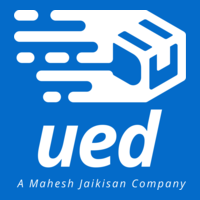Scope of Work for Engineering Feasibility
The Scope of Work (SOW) defines the boundaries, deliverables, and responsibilities for a project. In the context of an industrial setup, the SOW outlines all the tasks, services, and outputs necessary to complete the project. Here’s a breakdown of a typical SOW for engineering feasibility in an industrial setup:
1. Project Understanding and Objectives
Identify project goals (e.g., establish a new plant, expand existing operations, or improve efficiency).
Define the intended purpose and capacity of the facility.
2. Preliminary Research and Data Collection
Site Analysis:
Conduct surveys for land use, topography, and soil testing.
Assess climate and environmental factors.
Utility Assessment:
Identify availability and capacity of power, water, and other essential utilities.
Regulatory Compliance:
Collect data on zoning laws, permits, and environmental standards.
3. Engineering Studies
Conceptual Design:
Develop preliminary layouts and process flows.
Process and Technology Selection:
Evaluate production technologies for suitability, cost, and efficiency.
Infrastructure Requirements:
Assess needs for storage, transportation, and support facilities.
4. Cost and Financial Analysis
Capital Expenditure (CAPEX):
Estimate costs for land acquisition, construction, equipment, and installation.
Operational Expenditure (OPEX):
Determine recurring costs for utilities, labor, maintenance, and raw materials.
Financial Feasibility:
Conduct ROI, NPV, and IRR calculations.
5. Environmental Impact Assessment
Assess the potential impact on air, water, soil, and biodiversity.
Propose mitigation measures to minimize environmental damage.
Ensure compliance with local and international environmental regulations.
6. Risk Assessment
Identify technical, financial, and operational risks.
Analyze the probability and impact of each risk.
Propose risk mitigation and contingency plans.
7. Project Timelines
Develop a comprehensive project schedule.
Identify milestones for key activities, such as approvals, procurement, and construction.
8. Deliverables
Feasibility Report:
Comprehensive analysis covering technical, economic, and environmental feasibility.
Engineering Drawings:
Conceptual and preliminary designs for the industrial setup.
Recommendations:
Suggestions for technology, site selection, and cost optimization.
9. Exclusions and Assumptions
Clearly state what is not included in the scope, such as:
Detailed engineering designs for construction.
Execution and procurement responsibilities.
Long-term operational management.
10. Responsibilities
Client Responsibilities:
Provide access to required data, including past studies or surveys.
Arrange meetings with stakeholders for approvals and inputs.
Consultant Responsibilities:
Perform all feasibility assessments and deliver reports within the agreed timeline.
11. Communication and Reporting
Establish a communication protocol for progress updates.
Schedule periodic review meetings to ensure alignment with objectives.
Would you like assistance tailoring this SOW to a specific industrial project or including additional elements like deliverables or timelines?

